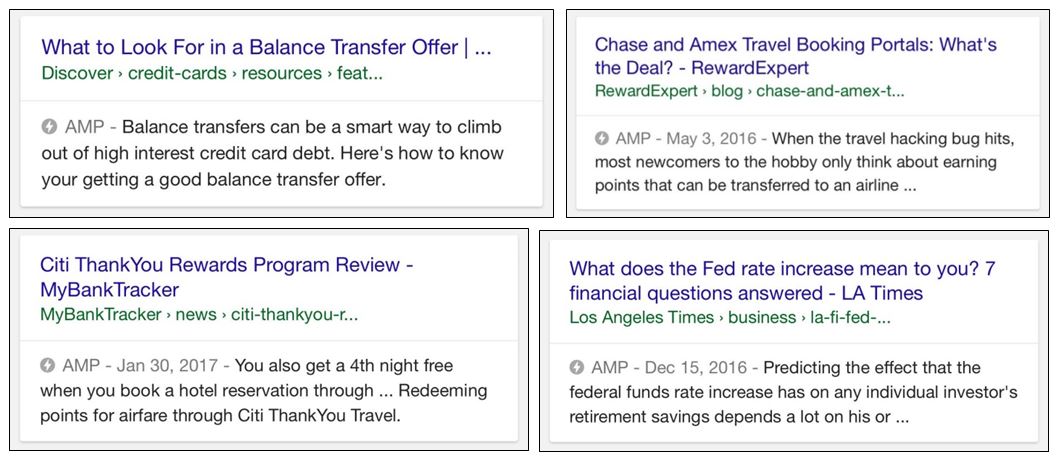How Accelerated Mobile Pages (AMP) Can Benefit Financial Services Brands

According to research from Hubspot “a whopping 33% of [survey] respondents use their smartphone as their primary device for internet use.” And Inc. cites research showing that “mobile marketing is a good start for future sales. 73% of mobile searches lead to an additional action.”
And while many industries continue to be amazed by the rate of growth in mobile usage, Google has been – for quite some time – figuring out how to improve the mobile experience of content on the web. In the first half of 2015, for example, the search engine rolled out a mobile-friendly update, which boosted the ranking of mobile optimized pages when users searched from mobile devices. And in February 2016, Google launched accelerated mobile pages (AMP), a way to build web pages that are “so fast [on mobile devices] they appear to load instantly,” avoiding what it calls a “slow, clunky and frustrating” mobile experience.
These pages frequently appear in the “top stories” carousel section that sits at the top of mobile search results, as identified by a lightning bolt icon and the letters “AMP.”

AMP results also appear in the organic listings, denoted with the same lightning bolt icon and the letters “AMP.”

The non-AMP experience
We’ve all seen “slow” and “clunky,” right? We turn to our smartphones to answer a question by searching the web. We choose a link from the search results, and then (sometimes even if the page is mobile-friendly), we wait … for … the page to … load. This experience is a waste of user’s time and a missed opportunity for the company/organization.
The improved mobile experience
Mobile use creates a sense of urgency, and providing consumers with the content they need in exact moment they request it is becoming more and more critical for brands. Here’s why: 85% of consumers say they’re unlikely to do business with a company following a bad mobile experience. Hubspot reports that “when mobile searchers find the information they’re looking for faster, they’re less likely to navigate away from a website.” In addition, Hubspot says content visibility is a key benefit: “[Google’s search results] layout and design changes help AMP content stand out in the crowd to users searching for information, which could drive more clicks and traffic.”
An important note: AMP is not intended to boost page ranking on its own. AMP does send a signal to Google, but it is one of many factors Google considers when it ranks a page.
Deploying AMP on financial brand websites
Media Logic has been recommending mobile optimization of bank and credit union websites for a while, and we still advise clients to build for the mobile experience as a priority. AMP does not change that recommendation. Instead, it seems to be creating an added opportunity, and we continue to monitor it on behalf of our financial services clients.
While it is still relatively new, here are some early recommendations for FS marketers who want to give it a try:
- Deploy AMP to pages selectively. In addition to optimizing entire websites for mobile, there may be specific pages – or kinds of pages – on which it would make sense for FS marketers to use AMP. Taking the lead from publishers, FS brands may want to consider deploying AMP versions of news items and blog posts. Consider also other kinds of information consumers want “pronto,” like answers related to who you are (“about” pages, for example) or to an action they might take right then (consider a balance transfer, for example, as in the example above from Discover).
- Craft content specifically and strategically for AMP. Since AMP streamlines page content considerably, put some thinking into what information to prioritize in the AMP version of a page. This means asking what about it is likely to be most useful to a mobile user.
- Monitor AMP as a source of web traffic. As with all content marketing efforts, you’ll want to keep an eye on analytics and use what you learn to direct – or redirect – the way you’re using AMP.
- Give yourself a boost… and a break. First, the boost: When creating an AMP version of a page, it’s helpful to notify Google of the new page to speed up indexing of the content. Next, the break: Make it easier on yourself by looking into automated tools for converting existing content into AMP format.









